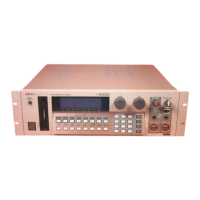Introduction
Glossary
Every new technology invents its own terms to describe new techniques. Digital music is no
exception, unfortunately. However, a glossary such as this can help introduce you to the
vocabulary and concepts involved. We assume you have a basic knowledge of MIDI, but if
the S1000 is your first excursion into MIDI and sampling, we suggest you get hold of an
introductory MIDI book, and read it before proceeding much further with your S1000.
NOTE: This manual covers all models of the S1000 series - including the S1000PB
(playback model). On the PB model, the CURSOR and DATA rotary knobs are replaced
by two pairs of buttons (<= and =>
), which correspond to turning the knobs by
counterclockwise and clockwise respectively. One press of these buttons corresponds to
turning the knobs by one click.
For the sake of simplicity, this manual will always refer to turning the CURSOR or DATA
knobs. If you are using a S1000PB, you should interpret this as pressing the appropriate
button (CURSOR or DATA). Where other S1000PB-specific information is given, this
will be clearly indicated.
Button
In this manual, the word "button" will generally be used to refer to a push-button switch
on the front panel. This is to distinguish them from the keys on a musical piano-type
keyboard. There are two major exceptions to this convention: the use of the terms
"number keypad", and "soft key", which come from computing, and are so
well-engrained in technical language that using the terms "number button pad" and "soft
button" would be pointless.
Crossfading
On the S1000,
crossfading is the term used to describe the setting of the relative volume of
two samples which are played at the same time. For instance velocity
crossfading is used to
describe the relative balance between two samples played by the same key, when the key
is played at different velocities.
Positional crossfading refers to relative balance between
samples in different
keyspans (see Multisampling. Additionally, the S1000 allows loop
crossfading - the ability to fade samples inside themselves to allow for smooth looping.
Cursor
On the S1000, the
cursor is the highlighted (reverse) part of the display which is moved by
the CURSOR knob (S1000PB - CURSOR buttons), and indicates the parameter which
may be changed by the DATA knob (S1000PB - DATA buttons) and/or the number
keypad.
Field
On the S1000, a
field is the portion of a page containing a parameter. Only fields (ie those
portions of a page which may be altered) will be highlighted by the cursor as the
CURSOR knob is turned to go through a page.
Key
In this manual, the word "key" will be generally used to refer to a key on a piano-type
keyboard to distinguish these from
buttons on the front panel.
Version 2.0 89/11 Page 9

